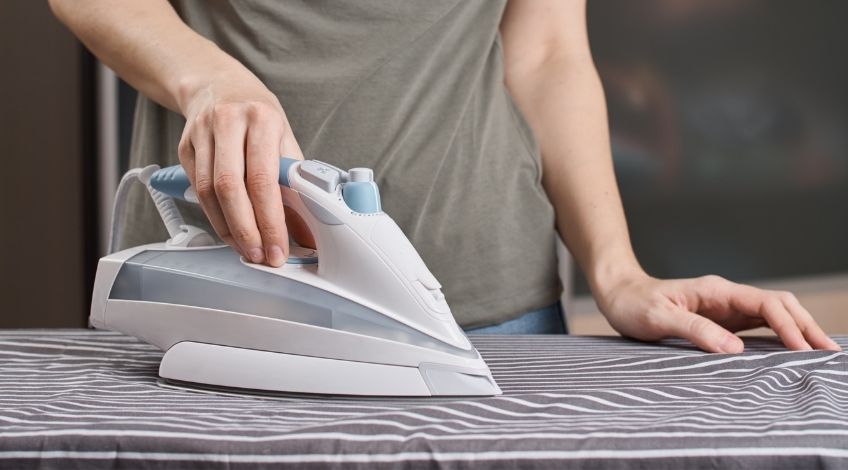
Can You Tumble Dry A Duvet? (read this first)
Most of us use a duvet nowadays, they make it easier to make the bed and they’re far more comfortable than the old fashion sheets and blankets with counterpanes of yesteryear.
The question we often get asked is can you tumble dry a duvet? In most cases, the answer is yes you can. However, there are a few points that need to be considered, so let’s get into it.
Check The Label
Most duvets can be tumble dried but always check the label first. The washing label on a duvet will tell you all you need to know. Things like:-
- The type of filling (synthetic or down)
- Type of drying recommended (tumble dry or not)
- If it’s dry clean only
- The spin speed
- The recommended water temperature (the average tends to be between 30-40 C)
Ensure The Duvet Fits In The Tumble Dryer
This might sound obvious but it needs addressing first. If the duvet needs to be crammed into the tumble dryer with no room to tumble, it will not dry. If your duvet has to be crammed into the tumble dryer we would suggest you air dry it and not use a tumble dryer. You can try your duvet for size by putting it in your tumble dryer before washing it to see if it will fit comfortably.
Heat Setting On Tumble Dryer For Duvets
Whatever the washing label on your duvet says, we would recommend drying on a low heat setting. Low heat causes far less chance of damaging the duvet whatever the duvet filling is made from.
For instance, feathers (down) are incredibly heat sensitive and using too high a heat setting could seriously damage the duvet. Even synthetic fillings can shrink if the drying temperature is too high.
If the washing label says not to use any heat we’d recommend not tumble drying it at all. You’ll have to dry it outside (air drying) instead, but be sure not to place the duvet in bright sunshine as this could be even hotter than a tumble dryer.
As the filling tends to accumulate at the bottom, we’d suggest laying the duvet on a flat surface to dry.
How To Prevent Bunching (Or Clumping)
Duvets are pretty delicate pieces of bedding, essentially large pillows with a synthetic or down filling. This makes them just as likely to suffer from the filling bunching up at one end. This can affect how efficiently the duvet dries so it’s important to remove the duvet from the tumble dryer every 30 minutes or so and fluff it up.
This entails shaking the duvet to move the filling, ensuring it spreads evenly throughout the duvet. Then resume the drying for another 30 minutes and so on.
Tumble Dryer Balls
If you intend to leave the tumble dryer to its own devices for longer than 30 minutes, we recommend you invest in some tumble dryer balls. These are either made from wool or rubber and tumble around with the duvet basically fluffing the duvet up for you as it spins. You can even use tennis balls in a sock for this purpose.
Check the care label on your duvet before using tumble dryer balls because some fillings cannot stand the rough and tumble of the balls during the drying cycle.
Partial Air Drying
If you are concerned about over drying your duvet, you could try to partially dry it in the tumble dryer and then lay it flat outside to finish the drying process. Take the duvet out of the washing machine and ensure all of the suds are gone (if there are any suds left, return the duvet to the washing machine and re-rinse and drain). Then tumble on a low heat setting until it is just damp, remove from the tumble dryer and place outside on a flat surface.

X
Keep The Iron Away From The Duvet
Whatever the material your duvet is made from or what it is filled with, never use an iron on it. Using an iron on any duvet can irreparably damage it. Almost all wrinkles will fall out during the drying and airing process so ironing is not necessary anyway.
How To Check If Your Duvet Is Dry
It’s important that your duvet is dry before use as a damp duvet can cause damp, must and lead to ill health. Dry weigh your duvet before washing and then reweigh after drying, if the numbers don’t match, then your duvet isn’t dry.
How To Prolong The Life Of Your Duvet
Where would we be without our nice snug duvet? To prolong the life of your duvet always use a washable duvet cover and keep a spare so it’s one on and one in the wash to be sure your duvet is always kept clean and dry. Never over dry your duvet, employ the weighing trick to be sure it is dry and then turn the dryer off.
Over drying your duvet will shorten its lifespan, if it does get a stain, try to spot clean just that area and not wash the whole thing. If tea or coffee gets spilt remove the cover immediately and with luck the duvet might not get stained, if it does spot clean it.
Frequently Asked Questions
It is possible to tumble dry most types of duvet, we recommend you check the care label first and if it’s ok to tumble the duvet check that it fits in your machine correctly. You will need to remove it every 30 minutes or so to fluff it up to prevent the filling from bunching up or clumping.
The length of time it takes to dry your duvet in a tumble dryer depends on the size of the duvet and what material it is made from. But the average time for drying a duvet in a tumble dryer is somewhere between 30 minutes to 2 hours.
It typically takes between 18 to 24 hours to air dry a duvet depending on the material it is made from.
You should wash a duvet around every 6 months, but the duvet cover should be washed as often as the bed sheets and pillow cases.
It is recommended that a duvet should be replaced every 2 to 5 years.




